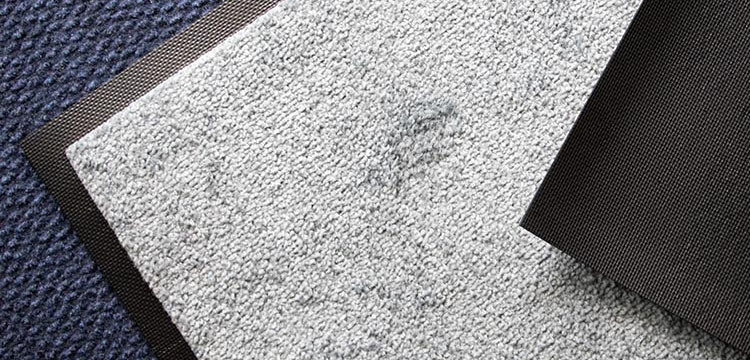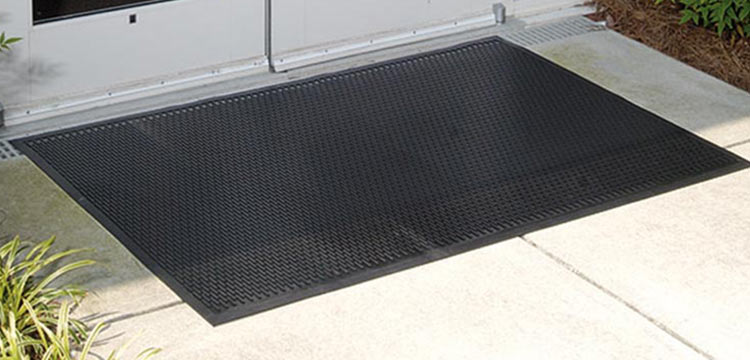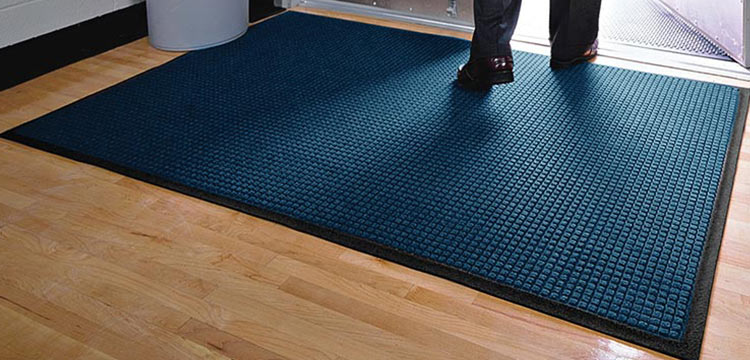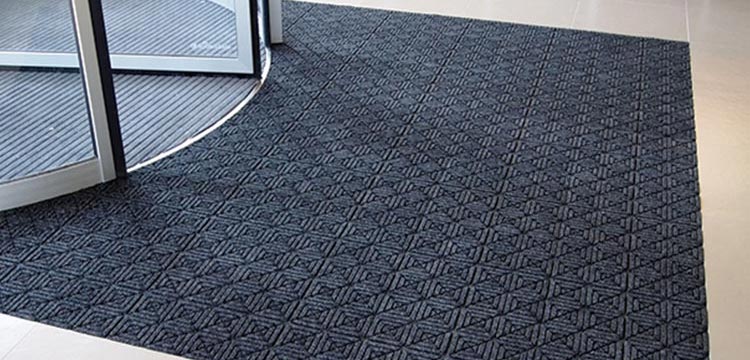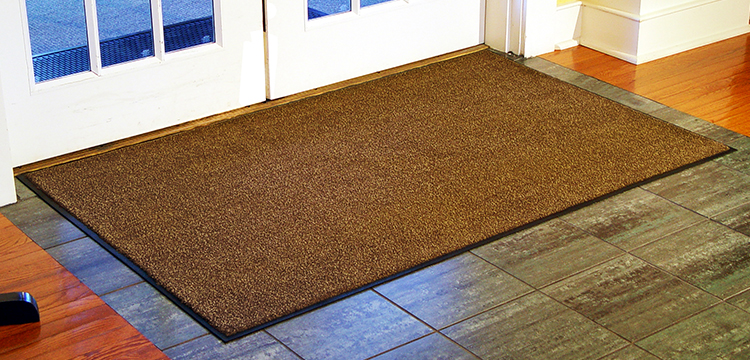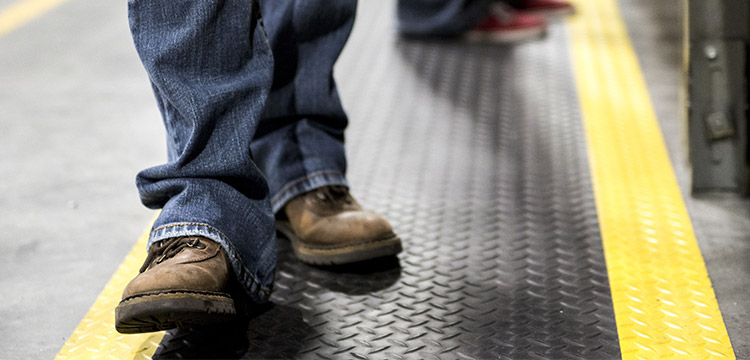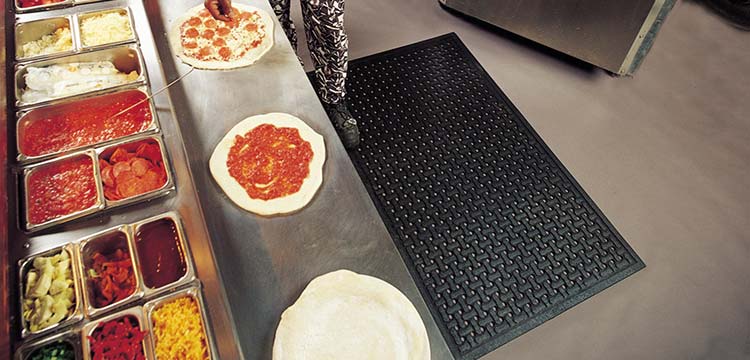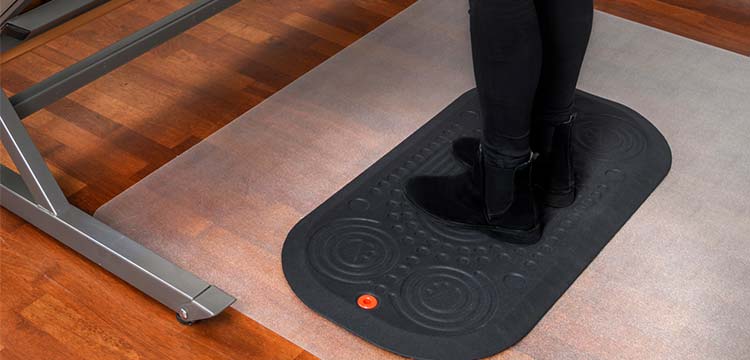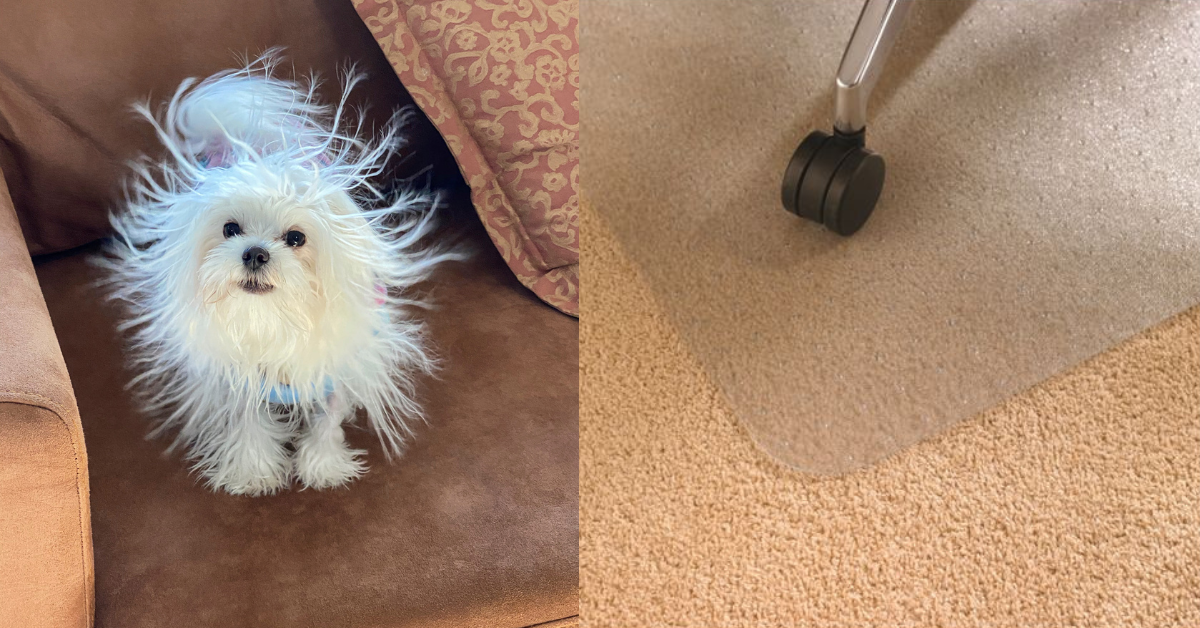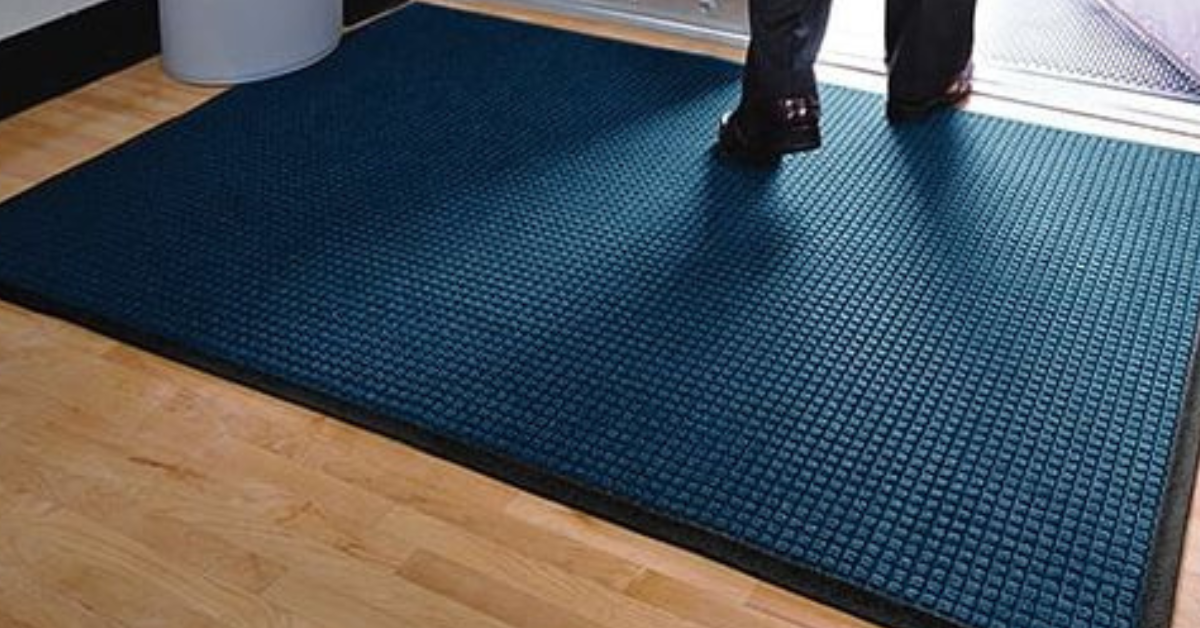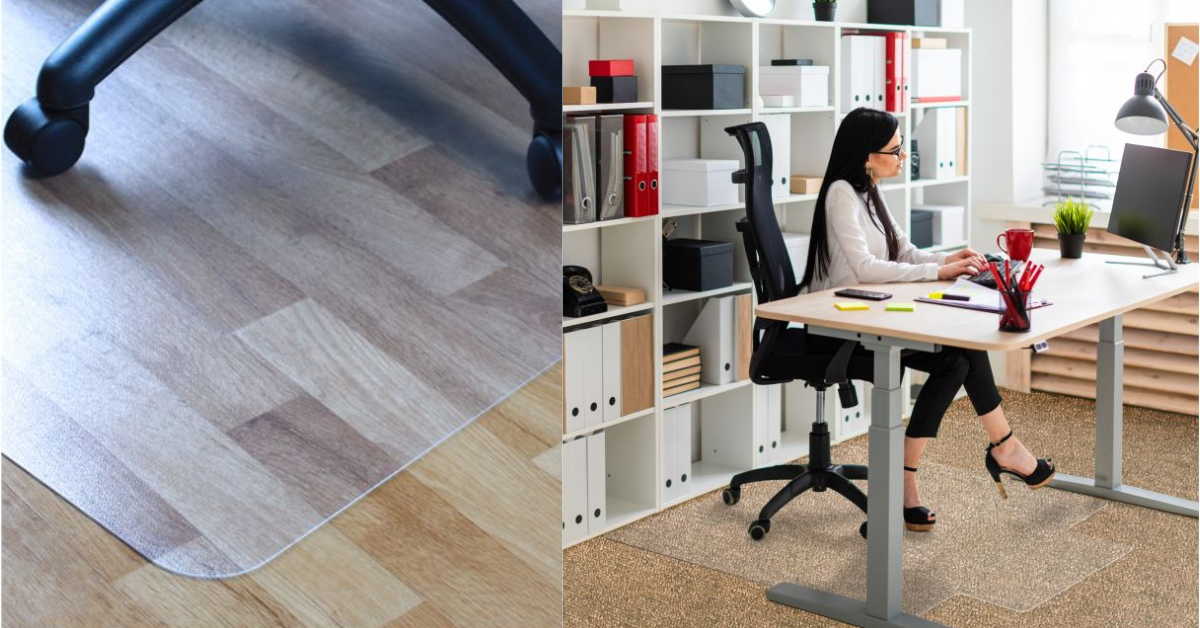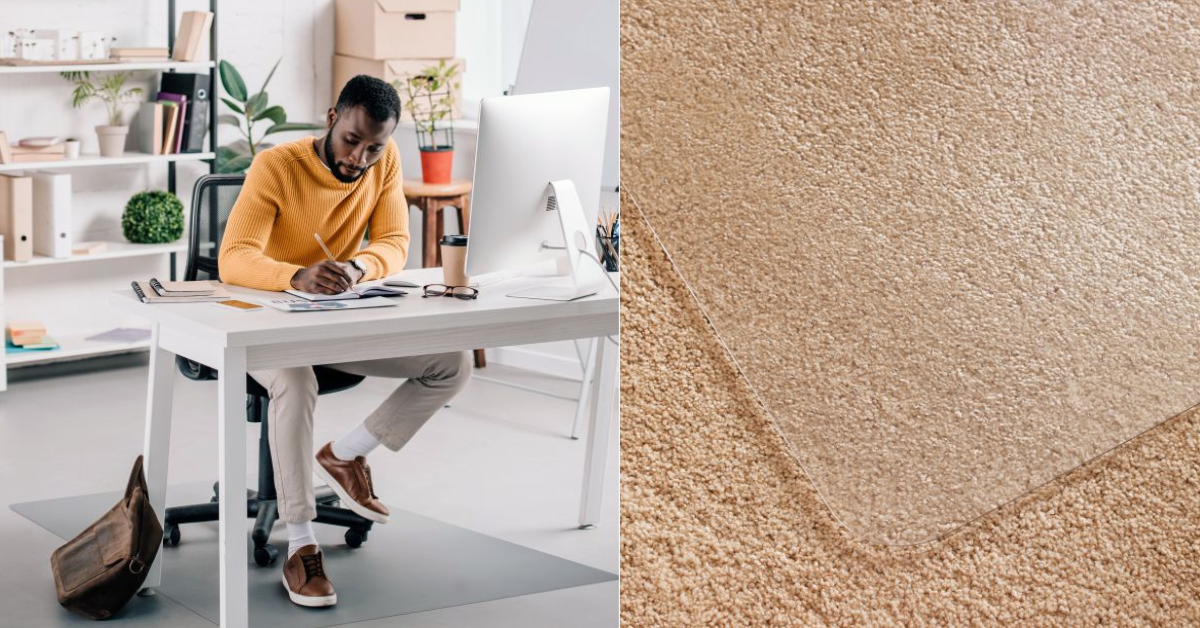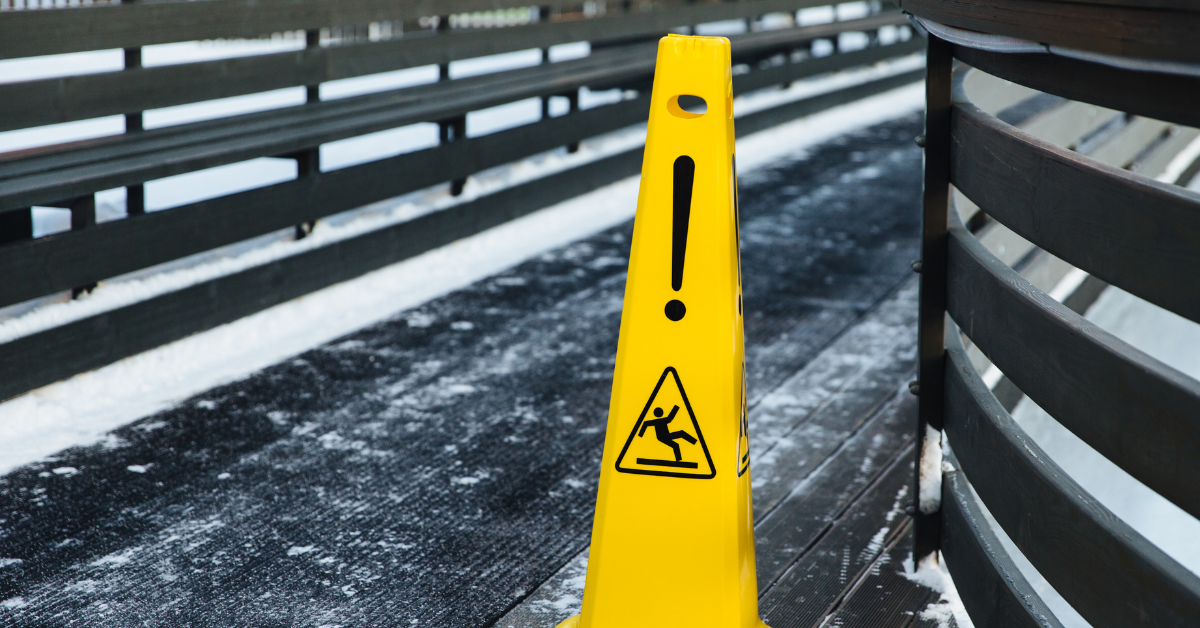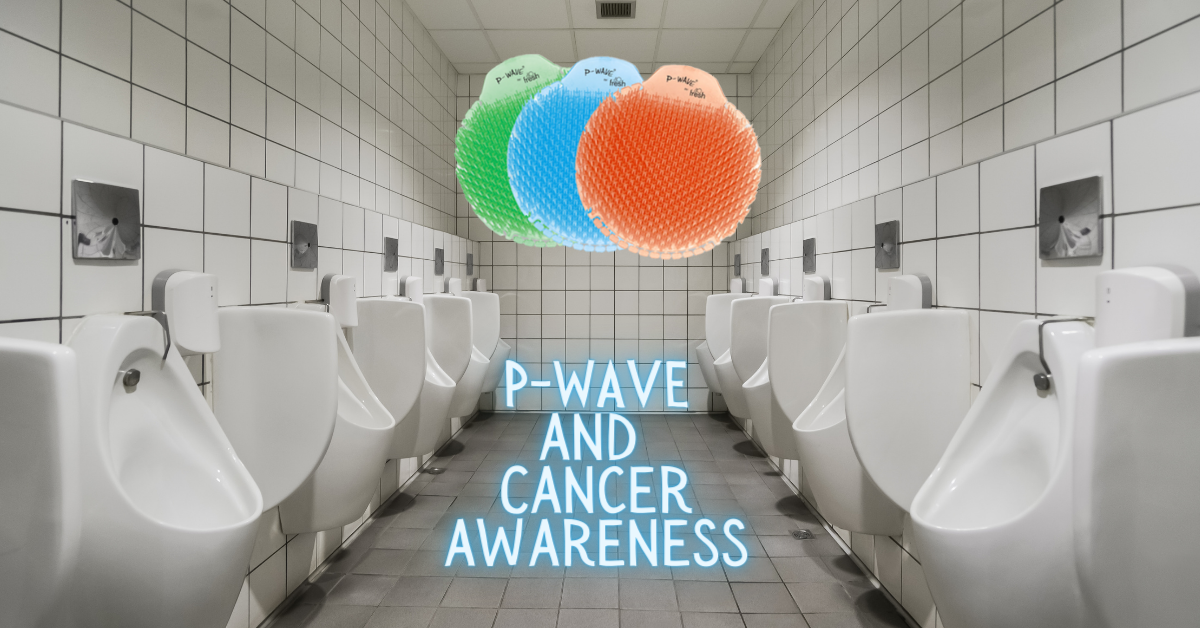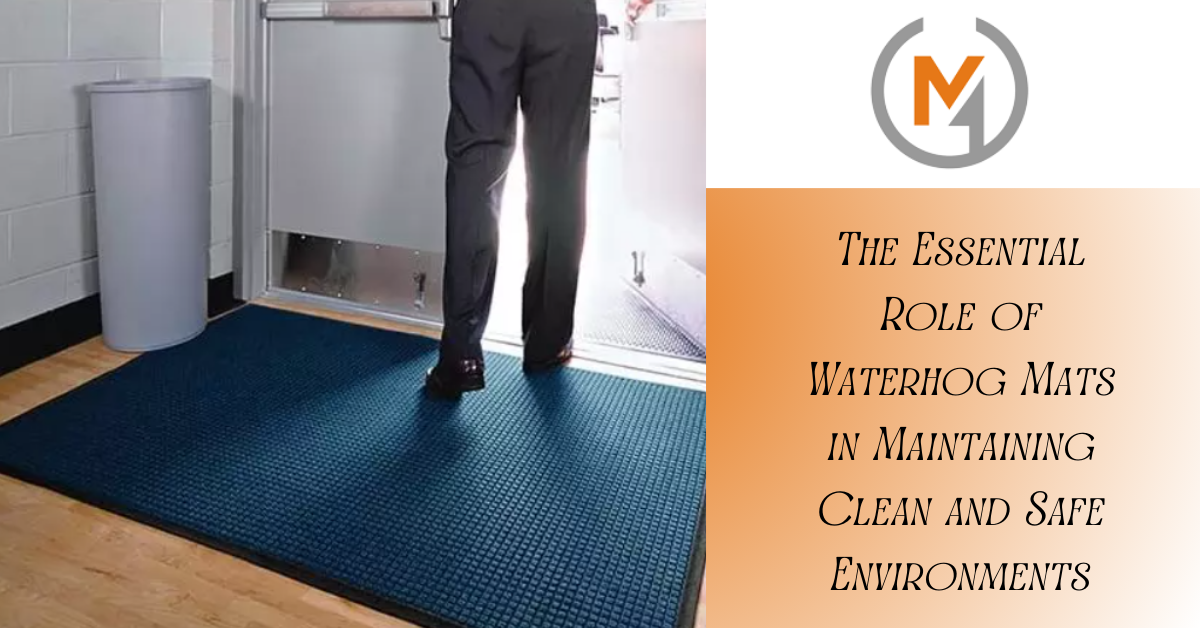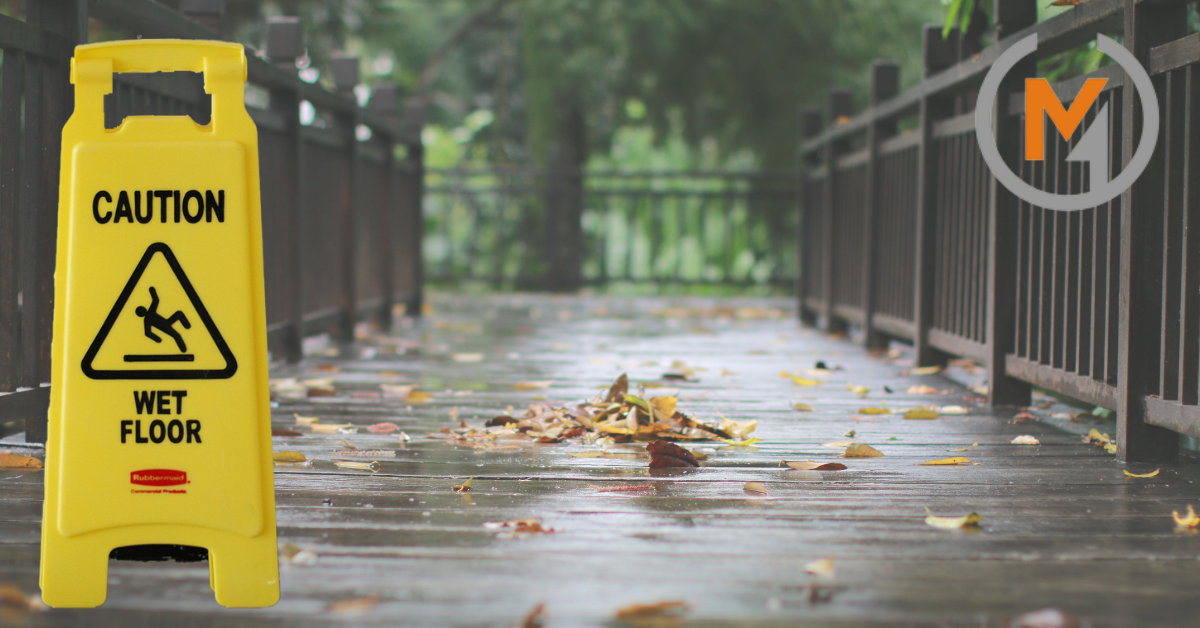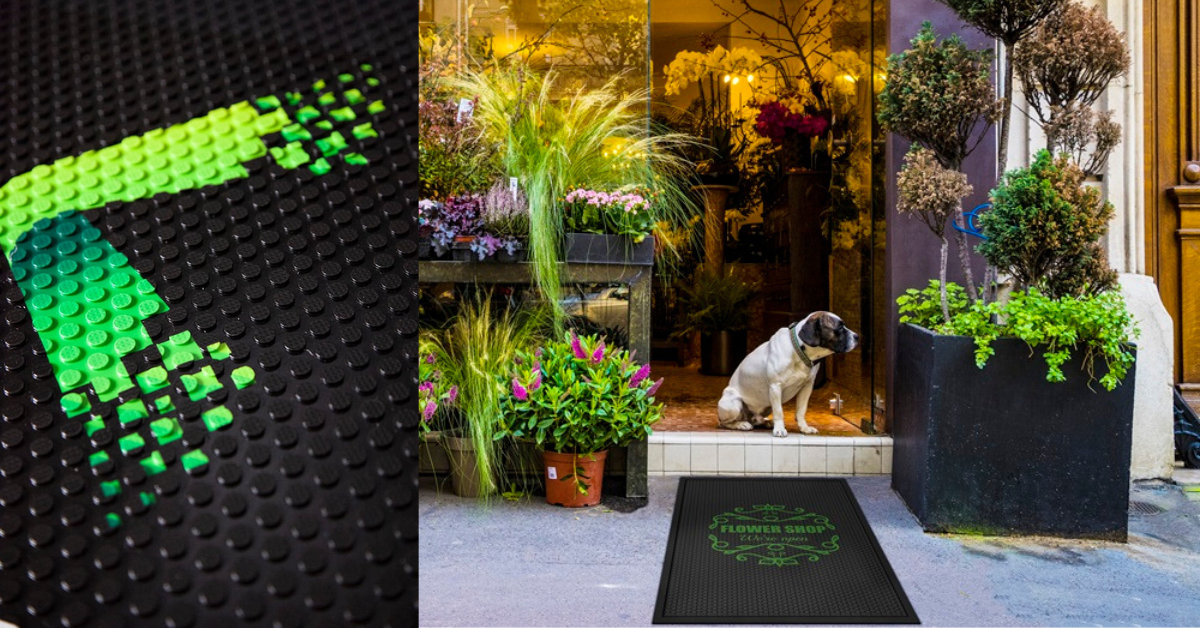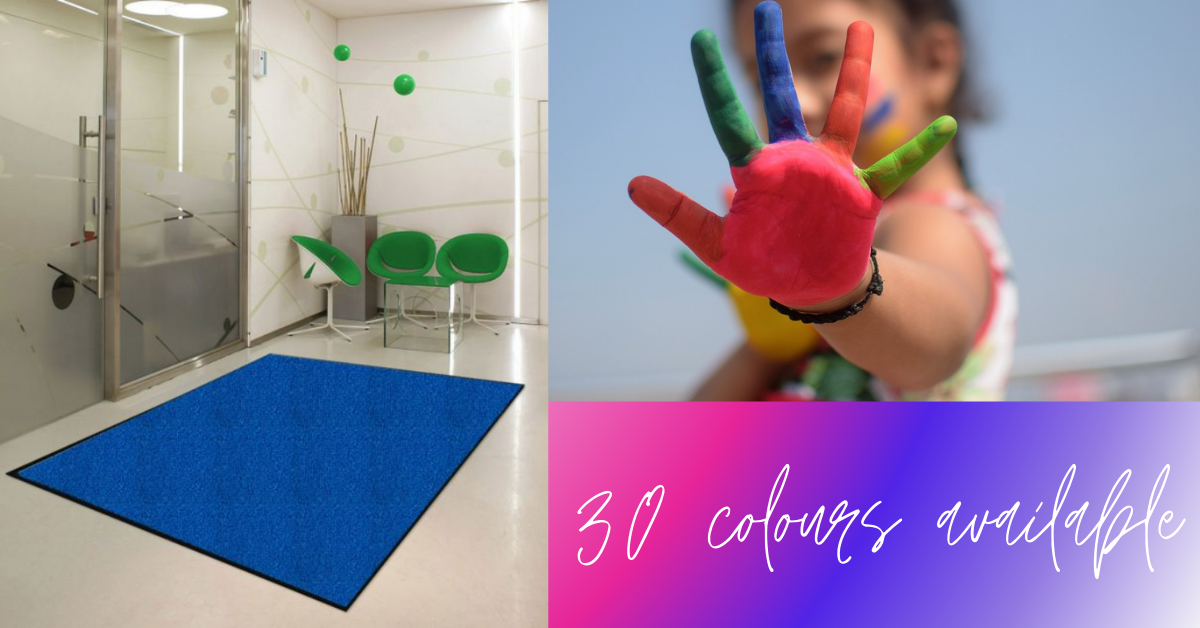7 Ways to Stop Slips on Ice
- Mats4U Blogger
- Blog
- 10 Nov 2017
- views
Slips and falls are extremely costly to society. Not only to the individuals involved, who suffer injury and incalculable emotional cost, but to businesses as well. Businesses face fines and claims of compensation as well as missed hours if it’s a member of their workforce who is injured. When temperatures dip and ice forms on paths and walkways, slip and fall accidents increase exponentially. Many of these accidents can be avoided with some simple measures put in place. Here we look at 7 ways to stop slips on ice.
1. Use grit on walkways
What we know as grit is more commonly rock salt. Spreading salt is a very effective method to stop slips on ice, because it works by lowering the temperature that ice forms on the surface. Put grit down in advance of cold weather to stop ice forming, or use it on snow and ice that has already formed to quickly melt it away.
2. Use deicer on ice that has formed
When ice has already formed then deicer is a more efficient solution than using grit / rock salt. Deicer is a chemical that generates heat to quickly melt ice away. The drawback is that it is not very good at preventing further ice from forming, so it will need to be reapplied regularly if low temperatures or snow fall persists.
3. Use matting
A quick and easy solution to stop slips on ice is to use non-slip matting at the external entrances to buildings and along paths and walkways. The mats need to have drainage holes to allow water to fall through the mat which will help prevent snow and ice forming on the mat surface. Rubber mats are best to use externally as they can resist low temperatures.
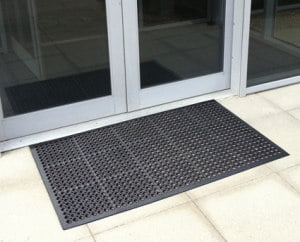
4. Cover external entrances and walkways
If your walkways and entrances are covered, with a canopy or porch for example, rain water and snow will not be able to fall on the ground and so this will eliminate the chance of ice forming in the first place.
5. Wear appropriate footwear
When walking on icy days it is important that individuals choose the right footwear for themselves. Businesses can also educate their employees in the importance of good footwear for safety. Rubber soles with treads will provide better traction. In severe conditions specialist cleats and overshoes may be worn to give that required grip.
6. Use warning signage
On an icy day, warning people of the danger should make them act more cautiously and hopefully watch where they are going. High visibility signage is useful for this purpose, but make sure that the sign is placed appropriately so as not to be a trip hazard in its own right!
7. Walk the right way
When walking the best way to avoid slips on ice is to slow down, take smaller steps and aim to have the whole of your shoe sole land on the floor at once, not just your heel. The increase in surface area contact between your shoe and the floor reduces the likelihood of you slipping.
At Mats4U we have several matting solutions that are designed to help stop slips on ice. You can view our range of non-slip mats on our website or contact us on 0121 313 6748 for more advice.

